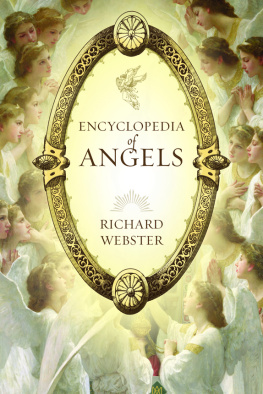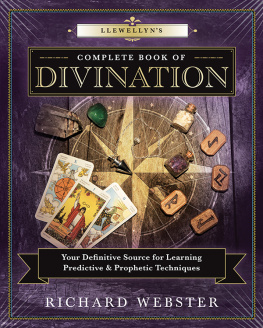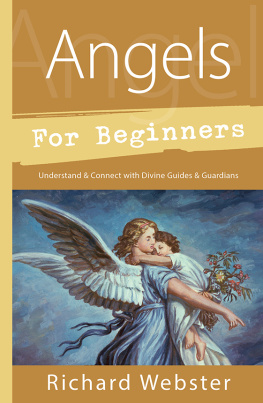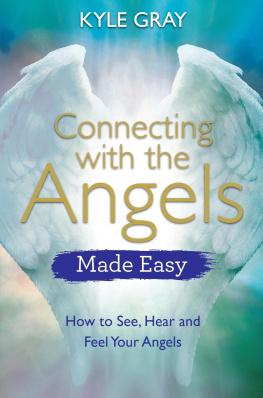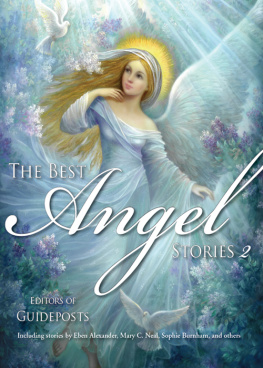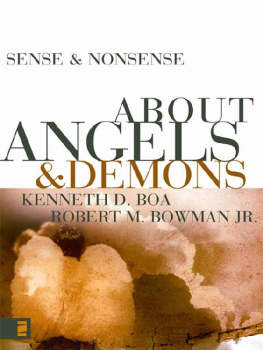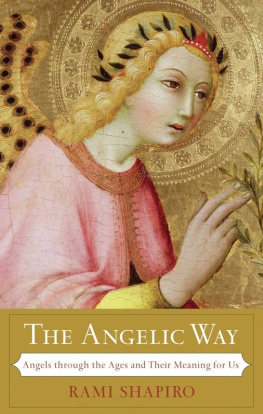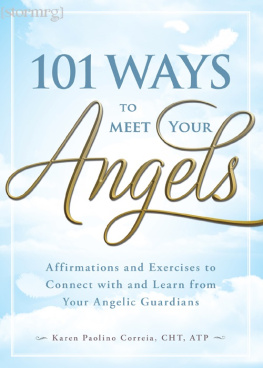About Richard Webster
Author of over seventy-five books, Richard Webster is one of New Zealands most prolific authors. His best-selling books include Spirit Guides & Angel Guardians and Creative Visualization for Beginners , and he is also the author of Soul Mates, Is Your Pet Psychic?, Practical Guide to Past-Life Memories, Astral Travel for Beginners, Miracles , and the four-book series on Archangels, Michael, Gabriel, Raphael , and Uriel .
A noted psychic, Richard is a member of the National Guild of Hypnotherapists (USA), the Association of Professional Hypnotherapists and Parapsychologists (UK), the International Registry of Professional Hypnotherapists (Canada), and the Psychotherapy and Hypnotherapy Institute of New Zealand. When not touring, he resides in New Zealand with his wife and family.
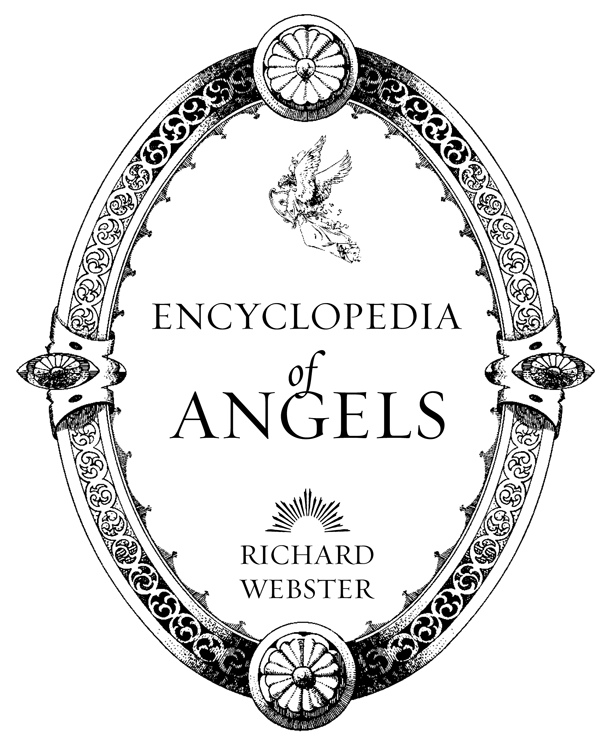
Llewellyn Publications
Woodbury, Minnesota
Copyright Information
Encyclopedia of Angels 2009 by Richard Webster.
All rights reserved. No part of this book may be used or reproduced in any matter whatsoever, including Internet usage, without written permission from Llewellyn Publications, except in the form of brief quotations embodied in critical articles and reviews.
As the purchaser of this e-book, you are granted the non-exclusive, non-transferable right to access and read the text of this e-book on screen. The text may not be otherwise reproduced, transmitted, downloaded, or recorded on any other storage device in any form or by any means.
Any unauthorized usage of the text without express written permission of the publisher is a violation of the authors copyright and is illegal and punishable by law.
First e-book edition 2012
E-book ISBN: 9780738722139
Book design by Steffani Sawyer
Cover art 2009 by Bridgeman Art Library, London, SuperStock
Cover design by Lisa Novak
Editing by Nicole Edman
Llewellyn Publications is an imprint of Llewellyn Worldwide Ltd.
Llewellyn Publications does not participate in, endorse, or have any authority or responsibility concerning private business arrangements between our authors and the public.
Any Internet references contained in this work are current at publication time, but the publisher cannot guarantee that a specific reference will continue or be maintained. Please refer to the publishers website for links to current author websites.
Llewellyn Publications
Llewellyn Worldwide Ltd.
2143 Wooddale Drive
Woodbury, MN 55125
www.llewellyn.com
Manufactured in the United States of America
Contents
Encyclopedia
: Guardian Angel Invocation
Introduction
M y maternal grandmother was a rather forbidding woman. One of her major tasks in life was to improve the behavior of her grandchildren. Whenever we did something wrong, even something as simple as picking up the wrong implement to eat with, she would say: People who are nice to know always know which fork to use. Breaches of etiquette were a horrendous sin. To this day, I can hear her saying, People who are nice to know followed by whatever it was we children were supposed to do. Fortunately, I can also recall some of her more tender moments. She enjoyed sitting on my bed at night, teaching me childrens prayers and traditional rhymes, such as:
Matthew, Mark, Luke and John,
Bless the bed that I lie on.
Four angels to my bed,
Four angels round my head,
One to watch, and one to pray,
And two to bear my soul away.
The last line of this poem must have prevented many children from falling asleep, but I didnt think much about the meaning of the words until many years later.
As I was five or six years old when I learned this rhyme, this must have been the first time I heard about angels. The only thing I learned about angels at school was they were Gods helpers. Catholic friends who lived nearby occasionally talked about angels, especially their guardian angels. I remember embarrassing the chaplain at school by asking him a question about guardian angels. He told me that people who went to the school down the road (the Catholic school) had guardian angels, but we didnt need them. I thought this was unfair but didnt know enough about angels at the time to question him further. It was not until I was in my mid-twenties that I discovered that I not only had a guardian angel, but that I also definitely needed him. This book is the result of the fascination Ive had with angels since then.
Angels are spiritual beings of light. The word angel comes from the Greek word angelos , which means winged messenger. This is because one of their main functions is to carry messages between mankind and God. They also serve and worship God.
The concept of angels is an ancient one. Many early religions believed in beings that could freely travel between this world and the realm of the gods. Jewish legends tell us angels were created on the second day of Creation.
The oldest known illustration of an angel can be found on a six-thousand-year-old stele from Ur. This shows a winged figure pouring the water of life into a cup held by a king. There are many other early examples of winged figures. The enormous part-human, part-animal winged griffins from Mesopotamia are one example. In Assyria, the griffins were considered Cherubim. They were strange figures with human or lion faces and the bodies of bulls, eagles, or sphinxes. These figures show the close relationship astrology has always had with angels, as griffins contain the four signs of the zodiac that mark the solstices and equinoxes: Taurus the Bull (spring equinox), Leo the Lion (summer solstice), the Eagle for Scorpio (autumn equinox), and the Water Carrier for Aquarius (winter solstice).
The Egyptian goddess Nepthys was often depicted as a winged figure. The ancient Egyptians believed everyone had an invisible double, called a ka . The ka was probably the persons soul, but it may well have been an early form of guardian angel.
Although wings are the most recognized attribute of angels, angels do not necessarily have wings. In fact, until the time of Emperor Constantine, wings were not usually visible when angels appeared. Medieval and Renaissance artists used wings in their paintings to symbolize the spiritual power of angels, as well as their ability to move between Heaven and earth instantaneously.
Zoroaster (sixth century bce ), the Persian prophet, established a religion called Zoroastrianism, which is still practiced today by two or three hundred thousand people in Iran and western India. It is the oldest existing revealed religion. There are three classes of angels in Zoroastrianism: Amesha Spentas (Beneficent Immortals), fravashis (guardian angels), and yazatas (angels). Even these angels were not the first true angels. Zoroaster adopted a variety of existing deities, including the sukali who were angels for earlier gods.
The influence of the Zoroastrian angels cannot be over-emphasized. The angels of Judaism were based on the cosmology established by Zoroaster. Christianity later adopted its angels from the Hebrew tradition. Both the Hebrew and Christian angels had an influence on the angelology of Islam. Although there are major differences in how these religions view angels, they all accept angels as an important part of their religious beliefs.
The Jewish Kabbalah is a valuable source of information on angels. It dates back to the first century ce , but the most important texts were written in the twelfth and thirteenth centuries. Among these texts are the Zohar and the Book of Raziel the Angel. According to legend, God taught the Kabbalah to his angels. The angel Raziel taught Adam the Kabbalah to help him find his way back to God. In the Kabbalah, angels are part of the Divine Energies that keep the universe in a state of balance.
Next page
